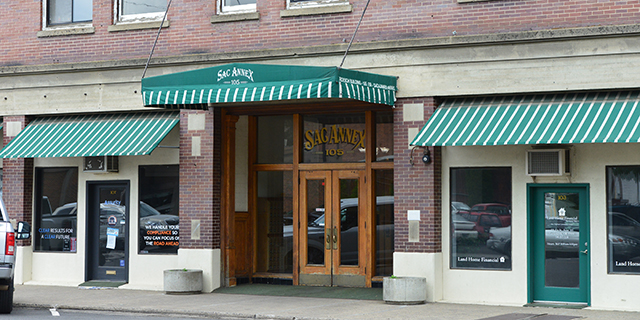The natural world: Between fungi and friends
Published 3:00 am Saturday, July 2, 2022

- Dauble
One week into the bloom of lowland peas and I am on my way to a ridgetop near Spout Springs, Oregon. Sagebrush country in the rearview mirror. Guitar licks on satellite radio. Sack of doughnuts in the shotgun seat. I would be casting flies for wild trout, but not during this unsettled weather year, when Blue Mountain streams still run high and roily.
Halfway down a state highway crowded with farm equipment, I dial up my brother to report I am going mushroom hunting.
“Likely the last time this year,” I say.
“You heading out by yourself?” he asks.
“I’ve got a cell phone.”
“Do you have provisions in case you get stuck?
“Sure,” I say. “A pocket knife, two water bottles, matches, a chicken salad sandwich, and a bag of chips.”
“Good luck with that,” he replies.
It’s nice to know my big brother, whose favorite childhood joke was to stretch soiled underpants over my head while I slept, still cares.
Stream fishing aside, it has been a good spring. Mushroom hunts started at 2,200-foot elevation on May 20. The Umatilla Forks Campground, shaded wilderness trails up Buck Creek, and searches around our cabin failed to produce. However, the following day yielded a robust family of corals near Lick Creek, proving that persistence pays off.
The next sojourn took place in a blackened landscape on the east slope of the Cascade Mountains. This one led by two friends who grew up in Yakima and find excuse to travel that direction for recreation whenever possible. I’m OK with sharing their venue as long as I don’t have to drive and we stop at a brew pub on the way home.
The first search area, at elevation 3,000 feet near Little Rattlesnake Creek, reminded, “never stop at the first fishing hole you encounter by the side of the road because it will yield nothing.” In other words, the warmup hunt was a waste of time. A gentle draw where fire burned hot across the base of living ponderosa pines eventually validated the experience. Following a string of footprints left by others, we collected a few dozen morels, a spring bolete, and two large puffballs. The latter mushroom is said to taste “just like tofu.”
The following week took us to my territory: the Blue Mountains east of Dayton, Washington. A good strategy when hunting unknown territory is to do so with friends. We typically scatter in different directions and communicate via handheld walkie-talkies. Which begs the question: how many morels do you harvest before you turn on your radio or yell and invite a share in the bounty? One, two, a dozen, or after you have filled a grocery sack? Let your conscience be your guide.
After a slow start we ended the day with a basketful of morels and several pounds of corals. More than once, a cry of “I found one!” caused the other two searchers to backtrack and circle around the source like turkey vultures after a roadkill.
But today’s hunt will be solo. A chance to connect with nature all on my own. After all, I know these forested slopes well enough that someone doesn’t need to point me to a mushroom. As a friend once said, “I’ve eaten enough dog food from other bowls to know I don’t have to wait for more to slop over.”
A review of past journal notes indicates peak harvest in the Blues occurs two weeks before the summer solstice. However, there’s snow in the shade and the bloom of arrowleaf balsamroot is delayed. A snowshoe hare that runs across the road, fur patched white and brown, also appears confused by delayed phenology. Regardless of these signs, I weave past rock slides that threaten to block Summit Road and park near a favorite spot.
The first found morel always amuses. “Ha,” I say to the local wood gnome. It helps when they are bigger than your thumb and in plain sight. Working the edge of old growth fir and huckleberry bushes yields several morels and dozen more where dark soil humps up alongside a downed log. A heavy basket reminds of childhood Easter egg hunts.
Driving down the road to flat terrain where sunlight filters through tall fir yields a trio of fresh corals followed by several oversized morels in a damp swale; what I call a “vein” of favorable moisture, temperature, soil type, and vegetative cover. This same vein never fails to produce a find. Don’t ask me to share its location.
My final stop is along a steep east-facing slope. I follow deer tracks to three plump morels that find their way into my canvas bag. Then, working downgradient through scattered huckleberry bushes, I pick up another dozen. The largest weighs 3.7 ounces at the Alpine Outpost in Tollgate.
I don’t need a GPS to tell me where I am or where I’ve been. My search begins a stone’s throw from an old toilet seat left by elk hunters. I slow my pace where deadfalls lay crosswise across rotten stumps and stop to look around where conifer duff accumulates. The edge of stands of old growth fir and ponderosa pine, where wild strawberries and wood violets thrive, is favored, as are worn animal trails. A long slow walk through uncharted territory can also lead to reward.
Did guilt creep in for not inviting friends to share in my bountiful harvest? I can honestly say, never at the point of each find. Elation trumps self-reproach when it comes to hunting the elusive morel.









